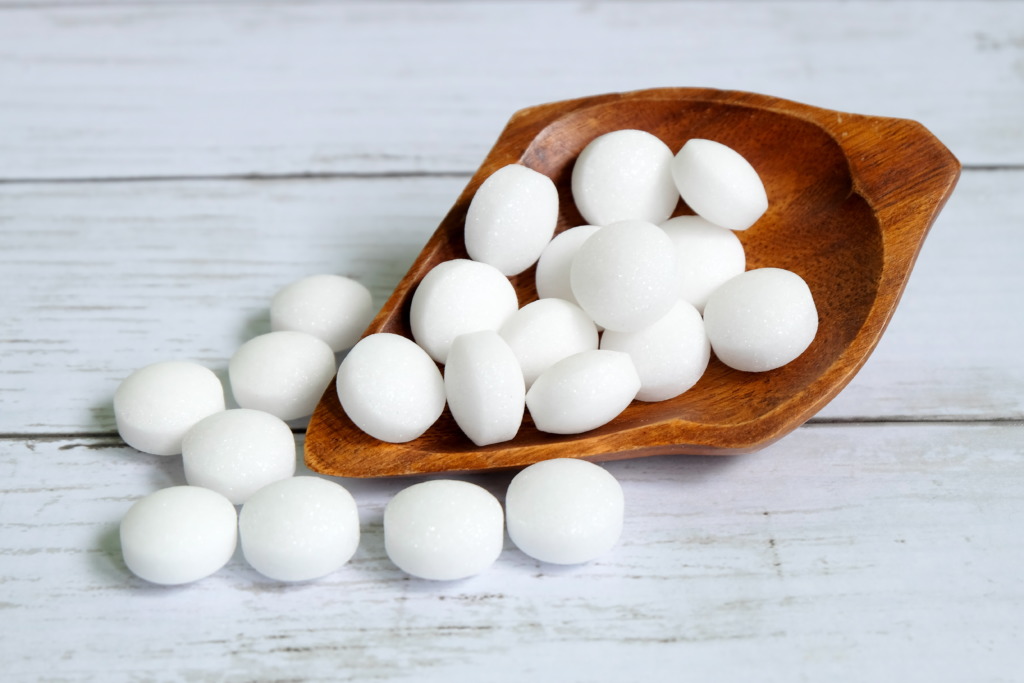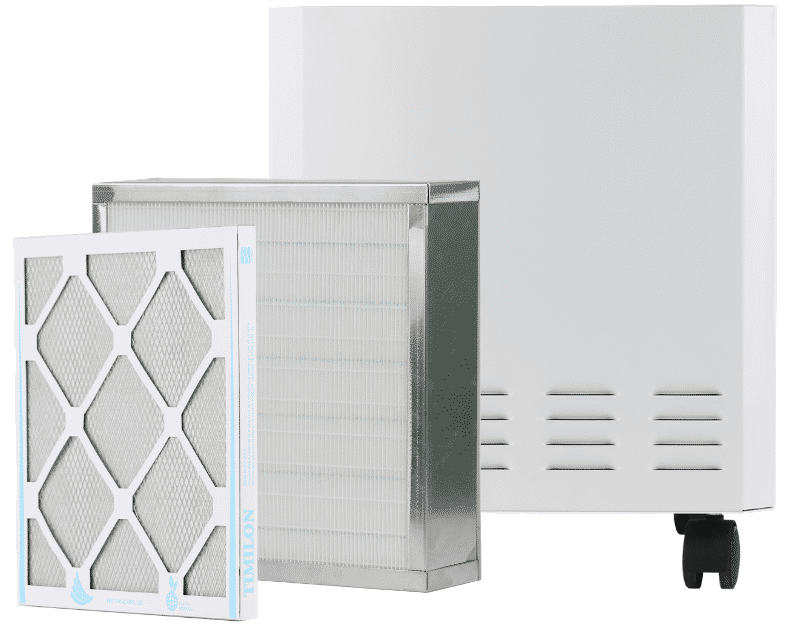How to Get Rid of Mothball Smell in House
The smell inside of your home can be filled with different scents including the smell of your preferred laundry detergent, the smell of your pets, and even the smell of other miscellaneous objects. These miscellaneous items are typically used in the home to provide a shield from invading objects that can lead to damage within this environment like bug repellent, pesticides, and even items that will protect your stored belongings for a long duration of time. These different products or chemicals that are used in the indoor environment of your home can contain possible hazards and health effects, depending on the product that is in use and the amount of the product that is used within this space. However, one product, in particular, when used inside of your home can not only lead to potential hazards in your environment but can also significantly impact the odors in your home, and this product is mothballs.
Mothballs are a commonly used object in many homes that is used when storing clothes and other articles susceptible to damage from mold or moth larvae. This storage protector, however, can contain different chemicals within its composition that can be emitted into the air and taint the indoor air quality of your home.
In this article we are going to discuss the dangers of mothball odors in your home’s air and how you can properly mitigate mothball odors and chemicals from the air of your home, both safely and effectively.
What are Mothballs
Nearly every homeowner is able to identify that strong scent of mothballs hanging in the air, that is usually caused by some sort of presence of this pesticide product in the environment. According to WebMD, they classified mothballs as the following, “Mothballs are a pesticide product that contains either naphthalene or paradichlorobenzene as active ingredients, both of these chemicals are toxic fumigants that volatilize into the air and must be present in high concentrations to be effective”. As these white ball-shaped mothballs become activated in your home, it will begin to release these chemicals used into the air that will taint the indoor air space and potentially lead to possible health issues in those occupants exposed to this contaminated air.
With growing information and research, there have been the development of other “types” of mothballs, that steer away from the hazardous chemicals used in traditional mothballs, however, many of these additional options still contain different risks to indoor air quality, and conversely human health. An upcoming selection for mothballs is ones that are constructed using Camphor as the main ingredient, in lieu of the hazardous naphthalene or paradichlorobenzene that are used in traditional mothballs. We will discuss further below how camphor mothballs are different than traditional mothballs and learn the risks that these newly used mothballs produce into the indoor environment.

How Does Mothballs Work
Mothballs are commonly stored around the home, typically in areas where storage containers are placed including attics, closets, garages, and basements. Placing mothballs strategically in the home, in these areas where moths can fester, and breed is important to protecting the materials that are being stored from damage caused by these insects. The process that these mothballs will go through and how they work will greatly depend on the construction of the mothballs and what chemicals are used in these mothballs – including naphthalene, paradichlorobenzene, and camphor.
When mothballs contain naphthalene and paradichlorobenzene, these types of mothballs will form from a solid into a gas and begin to release fumes into the air. These fumes that are produced from the mothballs will affect moths and moth larvae, leading to either the death of these insects or a strong deterrent to these insects from the area where the mothballs were placed. As mothballs produce these toxic fumes into the environment, that are hazardous to moths and moth larvae, to accomplish this removal the moths and moth larvae will need to be located in the enclosed environment (like the storage bin) where the mothballs were placed into.
What are Mothballs Used for in a Home
The use of mothballs can vary per household, depending on their desired outcome or removal in their home. According to the National Pesticide Information Center, they state the following about the use of mothballs, “Usually mothballs are utilized to kill clothes moths and other fabric pests that can breed and impact damage on stored clothing that was placed away inside the home. These forms of pesticides are regulated in the United States by the Environmental Protection Agency.”
Before you use mothballs within a home, it is necessary to read the label of this pesticide that will explain where exactly to use the mothball and how you can legally use the product – maintaining safety in the environment. If mothballs are used in a way that is not labeled permissible, this can potentially lead to harm to people, pets, and the environment in which the mothballs were utilized.
Is it Safe to Have Mothballs in the House?
It has been found that the different chemicals that are used within mothballs can be potentially toxic to humans and even pets that occupy this environment where the pesticides are implemented into. Some mothballs are made of nearly 100 percent active ingredient of either naphthalene or paradichlorobenzene, chemicals that are known to cause an array of health effects, especially when concentration levels of these chemicals is high, and exposure is high.
As we discussed earlier, mothballs produce toxic fumes into the air as the pesticides turn from a solid to a gas, these fumes will produce risks to all in the environment including people, kids, and pets. According to the Department of Health and Hospitals, when discussing what you should know about mothballs, the topic of mothballs toxicity was argued and they state the following;
“Some of the chemicals in mothballs can cause reversible health effects that include headaches, nausea, eye and nose irritation and coughing. Additionally, exposure to naphthalene can cause even more serious effects, including hemolytic anemia.”

What are Mothballs Made Out Of
Mothballs can be made out of a mix of different ingredients and chemicals that will provide it with the ability to combat moths and moth larvae from stored clothing and items. These ingredients will have a tremendous impact on the severity of the mothballs impact on the air quality of the indoor environment and the health of those in this indoor space like pets, children, and other occupants of the home. The active ingredients used in traditional mothballs such as naphthalene and paradichlorobenzene will contribute greatly to adverse impacts to the environment, and thus that is why many people are transitioning from traditional mothballs to alternative mothballs that use safer ingredients like camphor.
Camphor is a classified terpenoid that appears as a waxy, flammable, transparent solid that produces a potently strong aroma into the environment. This chemical is produced in wood of the camphor laurel, a large tree present in Asia. According to Ask Difference, “Camphor is synthetically produced from the oil of turpentine, and is used for its scent, as an embalming fluid, for medicinal purposes, and in religious ceremonies”. This chemical has since been adapted into mothballs to act as a moth repellent, although the chemical is not labeled as a carcinogen it is toxic when present in the environment in large doses.
What Do Mothballs Smell Like
The smells and odors produced from mothballs is an aroma that is known to keep moths from invading the home and protecting stored items such as clothing, bedding, and other items from these insects. Mothballs are constructed of different chemicals that will form this pesticide, and in turn it will leave behind a strong odor that smells distinctively of chemicals – and in many cases people will relate this odor with the smell of ‘old’ in a home.
When these odors are produced into the air of the environment, the chemical fumes will evaporate quickly which will lead to a strong odor lingering in the airspace. The removal of the mothball smell may require the help of odor-mitigating solutions such as increased air flow, ventilation, and even an air purifier that is designed to aid in the removal of both noxious and toxic odors and chemicals and the capturing of particulate matter from the air.
How to Get Rid of Mothball Smell in House
The process of using mothballs inside of an indoor environment like a house will produce toxic vapors into the air that will impact air quality by producing hazardous chemicals into the air, along with producing strong odors that will spread throughout the entire environment. When this occurs in a home it can lead to potential health effects that can impact both the human occupants and pet occupants of the home – and is why many people try to avoid the use of mothballs that contain the toxic chemicals like naphthalene and paradichlorobenzene, opting for camphor mothballs instead. However, as we discussed earlier, camphor mothballs will also produce harmful effects into an indoor environment.
Camphor mothballs produce solid particulate matter into the air, as well as emits a strong chemical odor into the air that can all lead to adverse impacts on indoor air quality and human health. These two pollutants produced from camphor mothballs can often times be mitigated through the use of powerful, effective air purifiers that work to attack and remove these two forms of pollutants from the air.
The EnviroKlenz Air Purifier is an effective and safe air purifier that helps to remove VOCs and noxious odors from the air of an indoor environment. The EnviroKlenz technology is unlike any other air purification technology, it uses a patented earth mineral technology that effectively contains and neutralizes chemicals and noxious odors through adsorptive neutralization. When it comes to the chemical odor produced from terpenoids, the EnviroKlenz Air Cartridge contained in the air purifier will effectively work to contain and neutralize the terpenoid from the air, thus removing the pollutant and chemical odor from the environment. The second stage filtration in the EnviroKlenz Air Purifier is a hospital-grade HEPA filter that is able to effectively capture 0.3 microns or larger onto the filter, this will include the solid particulate matter that is released from the mothballs into the airspace.
Article Sources:
- WebMD: Are Mothballs Safe? (link)
- National Pesticide Information Center (NPIC): Mothballs – Regulation, Proper Uses and Alternatives (link)
- Department of Health & Hospitals: What You Should Know About Mothballs (link)
- Ask Difference: Camphor vs Mothball – What’s the Difference? (link)
- The New York Times: One of Our Closets Has a Mothball Smell. Should We Try to Fix It? (link)

Mobile Air System
$749.00 $699.00

✓ Patented earth mineral technology works to attack VOCs and break them down on a compound level
✓ No chemicals or masking agents
✓ Will not release any chemicals back into your environment
✓ Safer and faster at removing VOC’s than traditional carbon filters and PECO air purifiers
